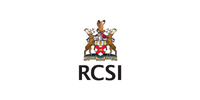With this technique, the thumb is not bandaged. Should this be necessary, the same technique can be used.
A pressure-distributing layer of padding should always be placed between fingers to prevent sores developing.
Material
Roller bandage:
- For a child: 4-6 cm wide.
- For an adult: 6-8 cm wide.
Procedure
- Place the bandage on the back of the hand and fingers [Figure 28].
 Figure 28
Figure 28
- Make a recurrent turn over the finger tips towards the palm.
- Use your thumb and index finger to hold the bandage on the patient’s hand [Figure 29].
 Figure 29
Figure 29
- From the palm, pass the bandage over the little finger and ring finger back to the back of the hand.
- From the back of the hand, pass the bandage over the index and middle finger to the palm.
- Finally, make a recurrent turn to the back of the hand, passing over the four finger tips [Figure 30].
 Figure 30
Figure 30
- Pass the bandage across the back of the hand, towards the little finger [Figure 31].
 Figure 31
Figure 31
- Just below the finger tips, make a circular turn [Figure 32].
- Ensure that the sides of the recurrent turns are fully covered by the bandage [Figure 33].
 Figure 32
Figure 32
 Figure 33
Figure 33
- Make a number of spiral turns around the fingers and the middle of the hand [Figure 34].
 Figure 34
Figure 34
- Fix the bandage with a circular turn around the wrist [Figure 35].
 Figure 35
Figure 35
- Make a number of figure-of-eight turns between the wrist and the middle of the hand.
- If the palm has been injured as well, allow some of these turns to pass across the palm towards the wrist.
- End the bandaging with a circular turn around the wrist and attach the end of the bandage to this turn.
The bandage has been correctly applied if:
- The thumb is free.
- The bandage does not exert pressure on the body tissue between the thumb and index finger.
- A padding layer has been placed between the fingers to ensure even distribution of pressure [Figure 36].
 Figure 36
Figure 36




























